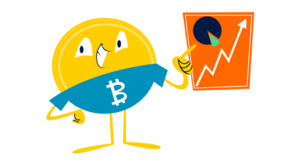Is your sales team missing out on significant revenue streams from large clients? Are you finding it difficult to scale your sales process?
These problems are common for small business owners who haven’t discovered B2B (business-to-business) sales, so don’t worry if this sounds like you!
Hi, my name is AJ! After selling my company for multiple seven figures, I launched Small Business Bonfire to help other entrepreneurs find their way!
Now, I’m here to guide you through the world of B2B sales and help you understand how it can benefit your small business.
Keep reading to learn what I mean when I say B2B sales!
Key Takeaways
B2B sales are transactions between companies rather than between a company and an individual.
B2B sales strategies have long sales cycles, higher transaction values, and multiple decision-makers.
The B2B sales model is popular for SaaS and manufacturing companies.
Each sales rep in a B2B company must have extensive product knowledge to handle customer objections.
B2B sales, short for business-to-business sales, are transactions between companies rather than between a company and individual consumers.
A B2B sales strategy typically involves the following aspects:
A more complex decision-making process Multiple stakeholders Longer sales cycles
Further, B2B sales involve higher-value transactions involving products, services, or solutions a business offers to other businesses.
Therefore, examples of B2B sales products include the following things:
Selling software-as-a-service (SaaS) to enterprisesSupplying raw materials to manufacturers Offering consulting services to corporate clients
B2C sales, or business-to-consumer sales, are transactions between businesses and individual consumers.
Unlike B2B sales, these transactions often involve lower-value items and a more straightforward, faster decision-making process.
Further, some examples of B2C sales include the following:
A clothing retailer selling to a customerA restaurant serving meals An online platform offering digital products
Lastly, the goal of B2C sales is to attract individual consumers and convert them into customers.
Typically, sales reps attract prospects through methods like targeted marketing and customer service strategies!
There are several ways the B2B and B2C sales strategies differ, including in the following ways:
Length of the sales cycle Transaction value Number of decision-makers involved in the saleBuyer education levels Sales methodology Product knowledge Payment terms
Here’s how business-to-business sales distinguish themselves from B2C plans!
B2B sales often involve a longer sales cycle!
Why? Because purchasing decisions typically require the approval of multiple stakeholders within an organization (I’ll explain more about that later).
Also, given the higher value of B2B transactions, these decisions can involve significant financial risk and require careful evaluation of the product or service’s value proposition.
Therefore, B2B strategies often demand sales teams provide product trials or demonstrations.
Lastly, the following things can lengthen the buying process for B2B sales:
ContractsLegal review Negotiation
B2B sales often have a higher transaction value than B2C sales due to the scale and scope of business needs.
For instance, these sales typically involve products, services, or solutions that are integral to a company’s operations or strategic goals.
As a result, B2B products require buyers to make substantial investments.
Further, unlike individual consumers, businesses have larger budgets and resources and often make bulk purchases.
As you can imagine, these factors drive up the transaction value in B2B sales!
B2B sales involve multiple stakeholders due to the complexity and high stakes of these transactions.
These sales typically impact various parts of an organization, ranging from operations to financial planning.
Therefore, multiple personnel from different departments might be involved in decision-making.
Further, considering the potential for significant financial risk, decisions about large-scale purchases often require approval from several levels within a business, including executive management!
Another way the B2B sales process differs from business-to-consumer tactics is buyer education levels.
For instance, B2B buyers are often more educated about the products and services they’re purchasing due to the high stakes and complexity of these transactions.
Also, these buyers typically undertake thorough research, including the following methods:
Studying various product specificationsComparing alternatives Understanding potential ROI to ensure the investment aligns with the company’s strategic objectives
Lastly, given that these purchases influence multiple facets of their operations, B2B buyers must possess an in-depth knowledge of the product or service to make informed decisions!
The sales methodology in B2B sales is more complex and structured.
For instance, a B2B sales team implements several stages to sell their products or services.
These stages include the following:
Identifying potential leads Nurturing relationships Closing the deal
Further, B2B tactics usually involve a consultative approach, where the sales reps act as trusted advisors, providing insights to assist the customer in meeting their business goals!
On the other hand, B2C sales strategies are typically more direct and transactional.
For example, these methodologies focus on promoting the product’s features and benefits to persuade the individual consumer to purchase.
B2B sales teams need extensive product knowledge due to the complex nature of business-to-business transactions.
Remember, these sales professionals often deal with well-informed buyers who demand detailed information and expect insightful solutions tailored to their unique business needs.
Also, with multiple stakeholders involved in the decision-making process, comprehensive product knowledge allows for persuasive, fact-based discussions that can lead to a successful sale!
In the B2B sales process, payment terms are more flexible, and teams can negotiate them as part of the sales agreement.
For example, some B2B payment terms include options such as Net 30 or Net 60 days.
Sales teams have more flexible payment terms because of the substantial transaction values and the collaborative, long-term nature of business relationships!
In contrast, B2C sales usually require immediate payment upon purchase.
Remember, in B2C sales, there’s a lower transaction value and a transactional, rather than relational, nature of these exchanges!
B2B sales reps are critical in developing and maintaining business relationships between companies.
For instance, these employees are responsible for the following tasks:
Identifying potential clientsUnderstanding customers’ unique business needs Providing tailored solutions that deliver valueDriving revenue growth for the company
On top of that, sales team members must manage lengthy and complex sales cycles involving the following actions:
NegotiationsDemonstrations Contract discussionsBuilding relationships and rapport
Next, I’ll cover the B2B sales process, which includes the following steps:
Lead generation research Prospecting Lead qualifying Sales pitch Handling customer objections Closing the dealFollowing up and nurturing existing customers
Here’s everything you need to know about each step (and feel free to use this as a free sales plan template)!
The research phase is the initial step in the B2B sales process, where sales and marketing teams identify potential leads for their product or service.
Further, these teams work on the following things during this stage:
Understanding the marketIdentifying their competitionLearning the needs and challenges of potential clients
The prospecting phase in the B2B sales process is where sales leaders reach out to the potential leads the team identified during the research stage.
Further, these individuals initiate contact through various channels, such as:
EmailPhone calls Social media
Put simply, the goal of the prospecting phase is to gauge the interest levels and to establish a connection!
Next is the qualification phase.
At this point, teams strive to convert potential customers into paying ones!
Therefore, companies apply certain criteria to determine if the prospect is worth investing time and resources into.
The criteria include aspects such as:
Financial capacityNeed for the product or service Decision-making authority
The pitch phase is the point in the B2B sales process where sales representatives present their product or service to qualified leads.
At this point, it’s crucial to highlight the following aspects of the product or service:
FeaturesBenefits Value proposition
The sales pitch is vital because it’s the primary opportunity for the sales team to convince prospective customers of the value their solution offers.
Further, the sales pitch is an excellent tactic to move target customers through the sales funnel!
The next stage is handling objections.
Handling prospect objections efficiently demonstrates the sales representative’s understanding of the client’s unique needs and concerns.
Further, teams can handle objections by doing the following things:
Actively listening to the client’s pain pointsEmpathizing with the clientProviding clear and compelling responses Reaffirming the value proposition of the product or service
The closing phase is one of the final stages in the B2B sales process.
At this point, sales representatives seek to finalize the transaction by gaining the client’s commitment to the purchase.
This step often involves the following things:
Negotiating terms and conditionsReinforcing the unique value proposition Providing assurances to eliminate any last-minute reservations
Following up and nurturing customer relationships is integral to a B2B sales strategy.
Sales teams can follow up with customers through various channels, such as:
EmailsPhone calls Social media
During these follow-ups, agents must provide additional valuable content, address queries, and seek feedback to improve the buying journey.
Lastly, nurturing relationships does the following things:
Fosters long-term relationshipsEncourages repeat business Facilitates referrals Drives sustainable revenue growth
Two popular B2B examples include the following:
SaaS sales Industrial equipment sales
After learning about these examples, you’ll understand why these sales processes take longer and often come at a higher price point.
Software-as-a-Service (SaaS) Sales
A classic example of B2B sales is when a SaaS company, such as Salesforce or HubSpot, sells its CRM or marketing automation software to other businesses.
The selling process involves the following steps:
Identifying potential clients who need a robust CRM systemPresenting a tailored solutionNegotiating prices Closing the deal
After that, the SaaS company follows up and nurtures the relationship, ensuring the team meets the client’s needs.
On top of that, the nurturing stage is an excellent time to look for opportunities to upsell, cross-sell, and referrals!
Industrial Equipment Sales
An industrial equipment manufacturer selling high-value machinery to construction companies is another example of B2B sales.
In this example, the manufacturer’s sales reps would conduct extensive research to identify construction companies needing their machinery.
After that, the agents qualify these prospects and pitch customized solutions.
Further, closing the deal can involve negotiating payment terms due to the substantial transaction value.
Afterward, the selling business maintains a relationship with the buyer, offering maintenance services and equipment upgrades!
Now, I’ll review the various types of B2B sales techniques!
Supply sales is where one business sells raw materials, components, or finished goods to another business.
The buyer then uses these supplies in their manufacturing process or for resale.
Distribution sales is where a manufacturer or supplier sells their products to a distribution company.
The buyer then resells those products to the end customer, acting as an intermediary in the supply chain.
Service sales is where a business sells services, as opposed to tangible goods, to another company, such as:
ConsultingMaintenance Digital marketing services
Software sales refer to the process of selling software products or services, such as:
Customer relationship management (CRM) software Enterprise resource planning (ERP) systems
These products help businesses streamline their operations or enhance their productivity!
Consulting sales is where a business sells its expertise in a particular domain to another company.
Consulting sales can involve things like:
TechnologyFinance Marketing
Consulting sales aim to provide strategic guidance or solutions to address a business’s specific challenges or improve its performance.
How do you ensure your B2B sales strategy performs well?
Easy! Follow these tactics!
Conducting customer research is paramount in B2B sales because it does the following things:
Helps understand customer needsImproves product offerings Customizes strategic communication
Put simply, conducting customer research drives successful sales outcomes and fosters long-term relationships.
Active listening in sales is crucial because it allows sales representatives to understand their customer’s unique needs and pain points.
Also, listening to a customer does the following things:
Fosters strong relationships Facilitates tailored, compelling solutionsIt makes the buying process less stressful
Engaging with existing customers is vital because it does the following things:
Fosters customer loyaltyEncourages repeat businessLeads to positive referrals
Focusing on value over features in B2B sales addresses the customers’ specific needs and delivers tangible benefits rather than merely showcasing product attributes.
As a result, focusing on value drives more successful sales outcomes!
Following up with potential and existing clients is critical in B2B sales because it does the following things:
Enhances customer relationshipsDrives customer loyalty It opens up opportunities for additional sales, upselling, or cross-selling
More importantly, regular follow-ups demonstrate your commitment to customer satisfaction.
For instance, you show clients your business is invested in their success, not just in making a sale!
Measuring sales performance is crucial as it does the following things:
Provides valuable insights into the effectiveness of your sales strategiesFacilitates informed decision-making Aids in identifying areas for improvement to drive business growth
Think of it this way: how will your team improve if they never review their previous strategies?
It’s critical to align sales and marketing departments if you want to do the following things:
Achieve a unified business visionCreate seamless customer experiences Optimize resource utilization
Before you commit to B2B sales efforts, ensure you know about these four challenges!
Building trust can be a challenge in B2B sales due to the complexity and high stakes of the transactions.
For instance, building trust demands time to cultivate relationships and prove reliability and value to skeptical potential clients.
Handling objections in B2B sales is particularly challenging due to the following factors:
The complexity of the products or services a company sells The high stakes involved The necessity of understanding and addressing each client’s unique concerns and uncertainties
As you can see, it’s critical for sales agents to handle objections efficiently because it boosts customer success rates.
Managing long sales cycles in B2B sales is challenging because it necessitates sustained relationship building, patience, and strategic nurturing of leads over a prolonged period.
Further, a prolonged sales journey can strain resources and impact the predictability of revenue streams.
On top of that, it can be challenging to keep ideal customers engaged throughout the process.
Lastly, dealing with multiple decision-makers in B2B sales presents a challenge.
Managing several opinions requires teams to do the following things:
Navigate complex organizational hierarchiesAlign disparate priorities and expectations Secure consensus among a diverse group of stakeholders
Lastly, I’ll briefly review popular B2B sales techniques!
Solution selling is a sales approach where the salesperson primarily focuses on the customer’s pain points rather than the products or services they sell.
Therefore, by understanding the customer’s problems, the salesperson can position their offerings as solutions to those problems.
As a result, the agent aligns the product’s capabilities with the customer’s needs and fosters a value-centric sales conversation.
The Challenger Sale is a sales approach that advocates selling through teaching, tailoring, and taking control.
Sales agents, or ‘Challengers,’ do the following things in this sales strategy:
Educate customers about new perspectives to solve their problemsPersonalize their sales pitch to resonate with the customers’ specific needs Assertively steer the sales conversation
Further, this technique aims to deliver unique insights and push customers out of their comfort zone.
Account-based sales is a strategic sales approach where teams treat key business accounts as markets of their own.
In account-based selling, teams design personalized campaigns to engage each account, addressing the stakeholders’ specific needs and pain points.
Lastly, this strategy aims to deliver highly tailored experiences to foster deeper customer relationships and drive larger deal sizes.
Value selling is a sales strategy focusing on highlighting the unique value that your product or service brings to the customer.
Therefore, instead of just discussing features or benefits, teams using this approach articulate how their solution does the following things:
Meets the customer’s specific needsSolves their problems Provides superior value compared to other options
Further, this strategy fosters a customer-centric sales conversation, driving larger deal sizes and longer-term customer relationships.
The Sandler selling system is a consultative sales methodology that encourages the salesperson to become a trusted advisor through discovery.
For instance, by asking strategic questions, sales agents uncover the prospect’s actual needs and pain points.
As a result, this process ensures a mutual fit between the client’s needs and the company’s offerings.
There you have it: everything you need to know about B2B sales!
The B2B sales methodology is when one business sells products, services, or solutions to another company.
Therefore, these transactions are of higher value, and the process usually takes longer than B2C transactions.
However, B2B sales are beneficial because companies earn significant revenue after completing a single sale!
What B2B challenges does your team struggle with? Let us know in the comments sections below.
The post What is B2B Sales? Guide for Small Business Owners appeared first on Small Business Bonfire.
—
Blog powered by G6
Disclaimer! A guest author has made this post. G6 has not checked the post. its content and attachments and under no circumstances will G6 be held responsible or liable in any way for any claims, damages, losses, expenses, costs or liabilities whatsoever (including, without limitation, any direct or indirect damages for loss of profits, business interruption or loss of information) resulting or arising directly or indirectly from your use of or inability to use this website or any websites linked to it, or from your reliance on the information and material on this website, even if the G6 has been advised of the possibility of such damages in advance.
For any inquiries, please contact [email protected]




